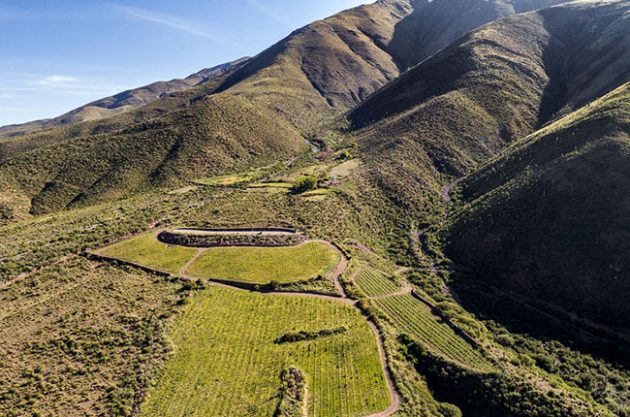Promotional feature
The emergence of new wine growing zones in Argentina is challenging the limits of production and offering new styles of wine. From the Atlantic coast to the arid, windy plains of Patagonia and the vineyards at more than 3000 metres above sea level, a whole range of flavours is on offer for the expert palate...Extreme Argentina: New limits, new terroirs
Promotional feature
Atlantic Chardonnay. Pinot Noir harvested at 45º south latitude on the steppes of Chubut. Sauvignon Blanc from the Quebrada de Humahuaca, 2,600 m.a.s.l, in the Tropic of Capricorn, and Malbec grown at 3,000m. These are some of the new, extreme places for wine in Argentina.
None of this was imaginable just over a decade ago, and yet today it is what surprises the wine drinker and challenges the limits.
The sea and the coast
Most wine-growing zones are near ports, as transporting wine has always been easier on a boat than on a mule. But the sea is not just a surface for moving wine. It is also a buffer that regulates the temperature and humidity of the surrounding areas. So much so, that there are two types of wine in relation to the sea: oceanic and continental.
Historically Argentina had only continental, but in the last decade some producers have emerged with intentions of making wines regulated by the sea. So, from Sierra de la Ventana to Chapadmalal, both south of the province of Buenos Aires, to Viedma, in Río Negro, there are a handful of vineyards that are influenced by the Malvinas current that comes up from Antarctica.

Chapadmalal, south of Buenos Aires. Credit: Wines of Argentina
The hectares planted up to 2016 amounted to 102, among which about 40 are vineyards. Chardonnay, Sauvignon Blanc and Gewürztraminer stand out, crisp and elegant with a citrusy steel profile. Good examples are; Trapiche Costa & Pampa Chardonnay 2015, Terrasabbia Chardonnay 2016, Ventania Blanco 2016, Wapisa Sauvignon Blanc 2017.
The Patagonian steppe
Chubut is the penultimate Argentine province before the Strait of Magellan. To date, it offers the southernmost point of wine growing. Taking into account that the Southern Hemisphere is cooler than the north – almost 2°C in average temperature, its 42 to 46° of latitude would be equivalent to several areas of Germany, with the major difference of being an arid steppe.
Among the valleys, criss-crossed by meandering rivers, such as Chubut or Senguer, there are a few scattered hectares of vineyards: 26 at last count, in places such as Hoyo de Epuyén, Paso del Sapo, and Capitán Sarmiento. The vast majority are Chardonnay and Pinot Noir.
At the moment, commercial wines are scarce, some good examples include: Paso del Sapo Chardonnay 2015, Familia De Benardi Chardonnay 2015, Familia Adamow Pinot Noir 2015 and Piedra Parada Pinot Noir 2010.
The sky and the earth
True to the tradition of producing high altitude wines, Argentina is at the forefront of exploring the possibilities. The new vineyards of the Calchaquí Valley and Quebrada de Humahuaca pierce the roof of 2,500m and up to 3,200 meters above sea level.

At these heights varieties such as Malbec, Cabernet Sauvignon and Pinot Noir are grown, as well as some Sauvignon Blanc. While the cold limits the cultivation of grapes, the intense sun promotes their development. The result is unmistakable: cold wines with very mature flavours. Unique in the world so far. Try Altura Máxima Malbec 2015, 2662 Malbec 2015 or Pasacana Tinto 2015.
So, what is the limit for Argentine wines? Nobody really knows…
This content was provided by Wines of Argentina.
More from Wines of Argentina:

Seven rising stars of Argentinian winemaking
The ones to watch...

Top Argentina winery restaurants
High-end gastronomy meets outrageously delicious wines...

Beyond Torrontes: Discover Argentinean white wines
Explore these white wines...

Argentina’s new Geographical Indications: providing precise limits for wine.
What's changing...?





